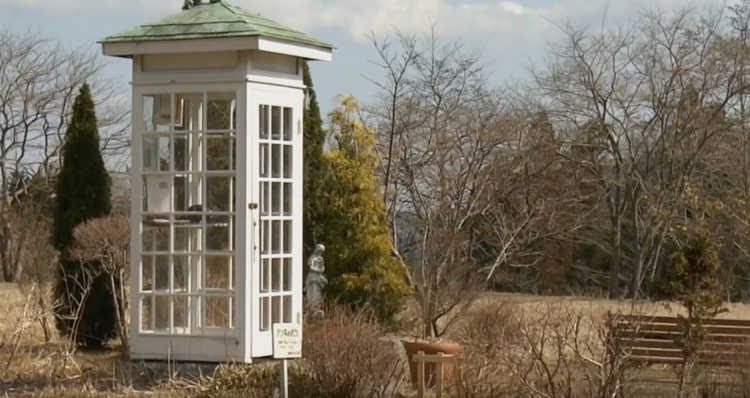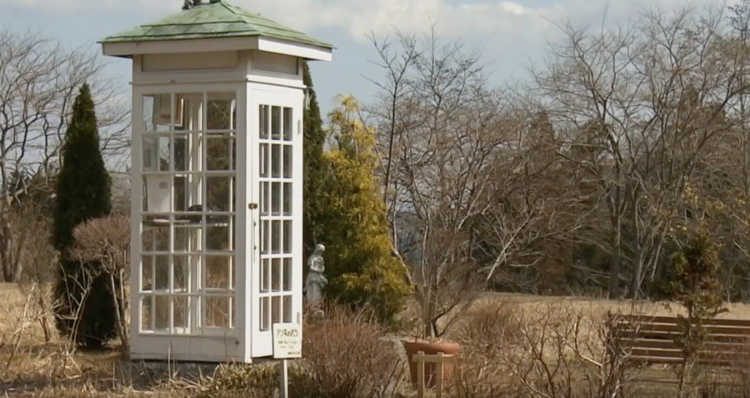Outside the Japanese town of Otsuchi, on a hill overlooking the Pacific Ocean, there is a white, glass-paneled phone booth with a black rotary phone connected to nothing and nowhere. Ever since the tragic tsunami of 2010, which claimed nearly 20,000 human lives, thousands of grieving people have visited the booth to “call” their lost loved ones as a way of coping with their loss.
The Wind Phone, as the now famous Otsuchi telephone booth is commonly known, was actually built a year before the 2011 tsunami that ravaged Japan’s Tōhoku coast. Otsuchi resident, Itaru Sasaki, had lost his cousin in 2010 and decided to build a phone booth in his hilltop garden from where he would call his dear relative as a way of dealing with grief. He would dial his cousin’s phone number on an old, unconnected rotary phone, and his words would be “carried on the wind” as he spoke. Even though no one would talk back to him, it made Sasaki feel a deeper connection to his cousin.

Photo: NHK video screengrab
In the aftermath of the 2011 earthquake, Itaru Sasaki opened his Wind Phone booth to the public, allowing members of the community to mourn their losses in the same way he had. Word of this therapeutic way of dealing with the loss of loved ones spread throughout Japan, and thousands of people from outside Otsuchi started visiting the Wind Phone. It’s estimated that over 10,000 people visited this place in the three years after the natural disaster that shook Japan to its core, with many making the cathartic ritual every year since.
“The telephone is not connected, but people feel like their lost loved ones are there listening on the other end of the line,” Itaru Sasaki said. “I want people to resume their lives as soon as possible by expressing their feelings.”
Talking into a person who has passed away through a disconnected rotary phone in the middle of nowhere may seem strange to some, but research has shown that such unusual outlets for grief can help people cope with grief and accept their tragic losses. To help users of the booth, Sasaki placed a notebook next to the black phone, where people can write messages to their deceased loved-ones.
The Wind Phone gained notoriety after the 2011 earthquake and tsunami, but it has since become a popular destination among people who have lost loved ones in all kinds of accidents or to suicide and need help to overcome their grief. In recent years, the booth has even welcomed foreign visitors who learned about it from the internet.
The white telephone booth connected to nothing and nowhere was the topic of a touching documentary created by Japan’s national public broadcasting network, NHK, called “Phone of the Wind – Whispers to Lost Families”, and inspired its creator to write a best-selling book entitled The Phone of the Wind – What I Have Seen Via the Phone in the Six Years Since the Earthquake”.
A feature film called “The Phone of the Wind”, directed by Nobuhiro Suwa and inspired by the true story of this unique phone booth, is scheduled for release in 2020.
Sources: ISPR, All That Is Interesting, BBC













